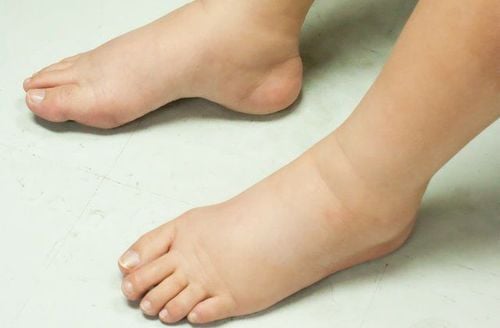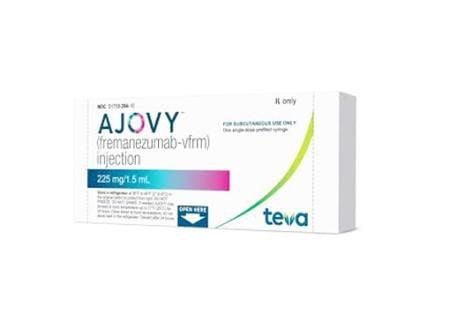This is an automatically translated article.
The article was professionally consulted by MSc.BS expert by MSc Nguyen Thanh Vinh - Department of Obstetrics and Gynecology, Vinmec Ha Long International General Hospital.Preeclampsia is a pregnancy-related disease in women, which can leave many serious complications for the mother and fetus if not treated promptly. Therefore, pregnant women need to understand well about pre-eclampsia to know how to prevent it as well as to go to a medical facility in time when there are abnormal symptoms.
1. What is preeclampsia?
Preeclampsia is a systemic pregnancy syndrome caused by pregnancy in the last 3 months of pregnancy (from the 20th week) with 3 symptoms: hypertension, proteinuria and edema.Preeclampsia is the period that occurs before a seizure occurs. The phase of eclampsia can last for a few hours, days, weeks, or just transient, depending on the severity of the disease.
2. Favorable factors for preeclampsia
Preeclampsia is more likely to occur when there are favorable factors, including:
Polyhydramnios . Mothers who gave birth when they were over 35 years old, under 18 years old, or mothers who smoked. Pregnancy in the cold and wet season. Preeclampsia, manifestations of preeclampsia often manifest early. Pregnancy in women with diabetes, chronic hypertension, and obesity. History of preeclampsia - eclampsia in a previous pregnancy.

Hút thuốc lá làm tăng nguy cơ tiền sản giật ở mẹ bầu.
3. Causes of Preeclampsia
To date, the pathogenesis of preeclampsia is not fully understood. However, there are several factors that can contribute to the development of preeclampsia.Pregnant women with certain disorders such as hemophilia, a history of diabetes, kidney disease, or an autoimmune disease such as lupus (skin sores) before. Having a relative in the family such as a grandmother, mother, aunt, aunt or sibling,... has preeclampsia. Being overweight or obese during pregnancy. Reflections in uterine distension in multiple pregnancies, macrosomia. Uterine ischemia - placenta.
4. Symptoms of Preeclampsia
4.1. Hypertension This is the most common and earliest sign, valuable for diagnosis, monitoring, and prognosis.
systolic blood pressure ≥ 140 mmHg and/or diastolic blood pressure ≥ 90 mmHg (measured at least 4 hours apart at rest, occurring at 20 weeks gestation in women with previously normal blood pressure). Cases with systolic blood pressure increased more than 30 mmHg or diastolic blood pressure increased more than 15 mmHg above the pre-pregnancy blood pressure value should be of special attention, because preeclampsia may occur. The higher the blood pressure, the worse the prognosis for preeclampsia. Systolic blood pressure ≥ 160 mmHg or diastolic blood pressure ≥ 110 mmHg, must be determined quickly (several minutes) in order to use antihypertensive drugs promptly. If the blood pressure is still high 6 weeks after giving birth, the risk of becoming chronic hypertension is necessary, it is necessary to see a cardiologist for timely diagnosis and treatment.
4.2. Proteinuria Proteinuria levels can vary widely in 24 hours. Therefore, for an accurate proteinuria test, the urine must be sampled within 24 hours.
Proteinuria is positive when protein is greater than 0.3g/l/24 hours or more than 0.5g/l/random urine sample.
4.3. Edema Manifestations: Soft white edema, concave pressure - need to distinguish
Physiological edema is common in normal pregnant women in the last 3 months, only slight swelling in the legs, edema in the afternoon, lying down with the legs elevated will disappear.
Pathological edema if generalized edema, edema from morning, leg elevation does not go away. Severe edema may be multi-membrane effusion (pleural, peritoneal), cerebral edema.
Detection of edema by pressing on a hard background accompanied by rapid and abundant weight gain of the mother, >500 g/week or > 2250 g/month. Usually check in instep, back of hand, front of pelvis
Need to distinguish: Purple edema, renal edema, nutritional edema, filariasis
White, soft, concave edema

Phù trắng mềm, ấn lõm.
4.4. Accompanying symptoms, showing severe preeclampsia Anemia: Fatigue, pale skin, pale mucous membranes. Gastrointestinal signs: Nausea, vomiting, epigastric pain, right lower quadrant. Neurological signs: Pain in the occipital region, pain relievers do not help, lethargy. Visual signs: Dizziness, lightheadedness, decreased vision. Signs of polymembrane effusion: Abdomen, heart, lungs.
5. How to manage preeclampsia?
5.1. Prevention Pregnancy registration is the most basic step in preventing preeclampsia. Your doctor will diagnose preeclampsia by checking your blood pressure and testing for protein in your urine at each prenatal visit. Ensure a nutritious diet (especially protein), calcium supplements, and light meals. Keep warm. Early detection and prompt treatment of high-risk women to prevent eclampsia. Continuity of care during pregnancy. Screening for preeclampsia at 12-14 weeks of pregnancy for prophylactic use when high-risk results are present. 5.2. Treatment Treatment of mild preeclampsia: Can be treated and monitored as an outpatient by measuring blood pressure twice a day. Rest and lie on your left side. Monitor weekly, if severe, hospitalization and intensive treatment. If the pregnancy is full term, the pregnancy should be terminated at a specialized level. Drink enough water (2-3 liters of water per day), eat more protein and eat light. Treatment of severe preeclampsia: Hospitalization and blood pressure monitoring and aggressive treatment are required. Monitor blood pressure 4 times/day, daily weight and proteinuria, platelet count test, Hct, ultrasound and continuous fetal heart rate monitoring. The basic treatment regimen is as follows:
Medical treatment
Rest and lie on the left side. Sedatives: Diazepam injection or oral. Use Magnesium Sulfate. Antihypertensives are used for high blood pressure (160/110 mmHg). The drug works by dilating the arterioles, increasing blood flow to the heart and kidneys. In addition, the drug also increases blood flow to the placenta. Diuretics: only used when there is a threat of acute pulmonary edema and oliguria. Obstetric and surgical treatment:
If severe preeclampsia does not respond to treatment or eclampsia occurs, then terminate pregnancy at any gestational age. Before actively terminating the pregnancy, it is necessary to stabilize the patient's condition within 24-48 hours. A caesarean section should be performed if eligible, or a cesarean section is recommended when there is an obstetric indication or a prompt termination of the pregnancy is required.
6. Complications
6.1. Preeclampsia can cause the following complications for the pregnant mother and fetus. Eyes: Retinal edema, blindness. Renal: Acute renal failure. Liver: subcapsular bleeding, liver rupture, liver failure. Heart, lungs: acute heart failure, acute pulmonary edema (found in severe preeclampsia). Hematology: Coagulation disorders - bleeding, thrombocytopenia, disseminated intravascular coagulation, thrombocytopenia. Chronic hypertension, chronic nephritis. Complications for the fetus:
Intrauterine growth retardation (Over 50%). Stillbirth in the uterus. Premature birth (40%) due to severe preeclampsia. Perinatal mortality (10%). 6.2. Severe preeclampsia can progress to HELLP syndrome Severe preeclampsia can progress to HELLP syndrome – hemolysis, elevated liver enzymes and thrombocytopenia. This syndrome can be life-threatening for both mother and baby.
Pregnant women need to understand their health status and possible diseases during pregnancy.
Preeclampsia is a very scary disease that every pregnant woman wants to avoid, it can cause dangerous complications for both mother and baby such as: cerebral edema, acute kidney failure, blood disorders, liver rupture, acute heart failure, liver failure, fetal growth retardation, stillbirth, premature birth. Therefore, right from the first months of pregnancy, mothers should perform pre-eclampsia screening tests to proactively prevent and treat. In the last 3 months, when there are abnormalities related to pre-eclampsia such as leg swelling, you should have regular antenatal check-ups for advice from your doctor.
In order to protect the health of mother and fetus comprehensively, Vinmec provides all-inclusive maternity services (12-27-36 weeks), in which the 12-week maternity package helps monitor the health of mother and baby. early pregnancy, early detection and timely intervention of health problems. In addition to the usual services, the 12-week maternity monitoring program has special services that other maternity packages do not have, especially the quantitative angiogenesis factor test to diagnose pre-eclampsia. In addition, this maternity package also has other special services such as: Double Test or Triple Test to screen for fetal malformations; thyroid screening test; Rubella test; Testing for parasites transmitted from mother to child seriously affects the baby's brain and physical development after birth. After the results of antenatal care and testing are available, doctors will analyze and advise on genetics, nutrition, and a reasonable rest regimen for pregnant women to help mothers and babies have the best health, and develop fetuses. overview.

Hình ảnh khách hàng được tư vấn sức khỏe sau khi khám thai định kỳ tại Vinmec
Please dial HOTLINE for more information or register for an appointment HERE. Download MyVinmec app to make appointments faster and to manage your bookings easily.













